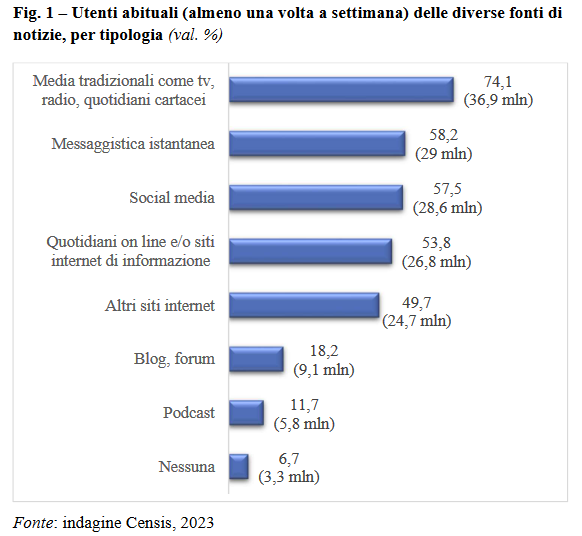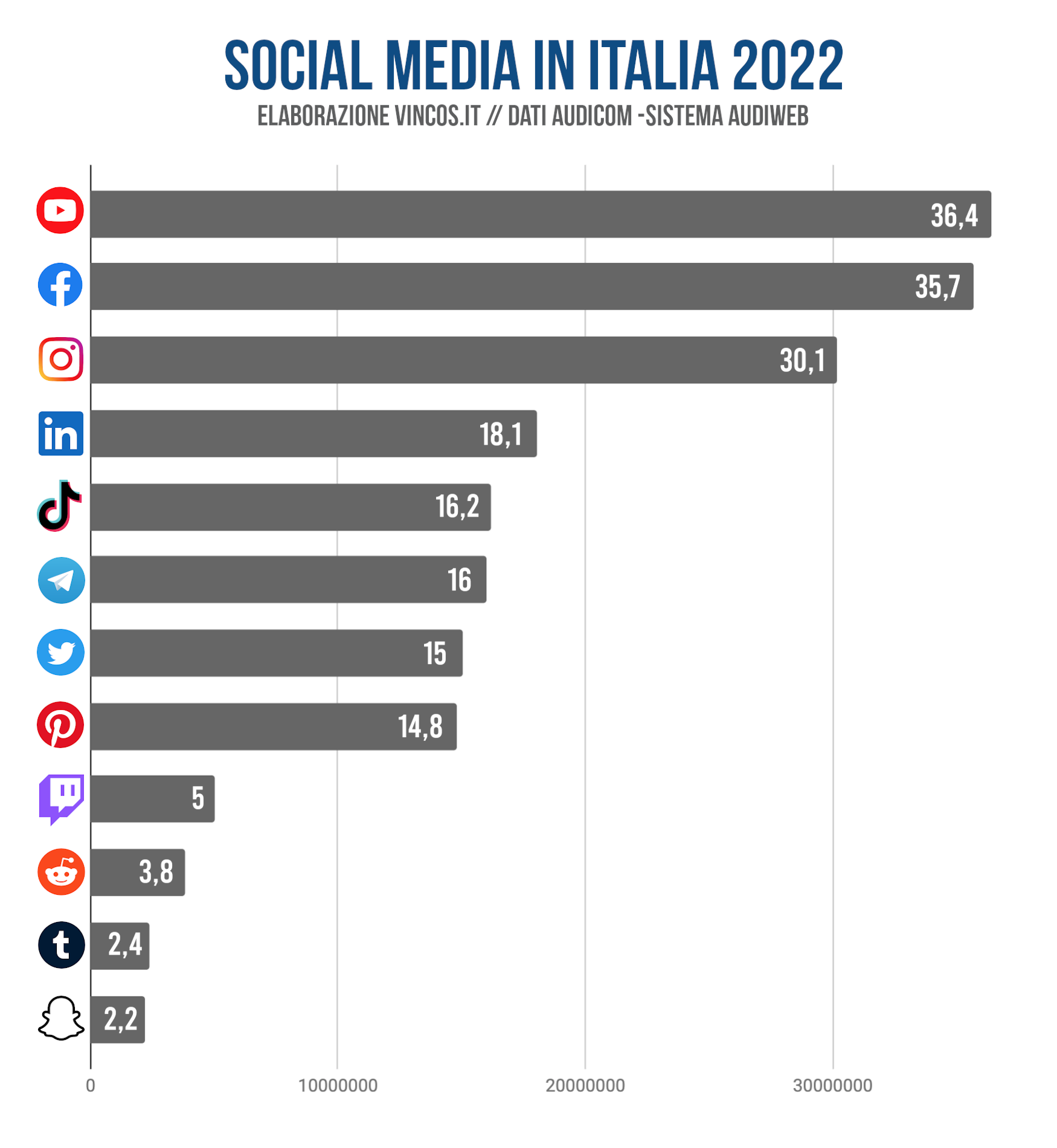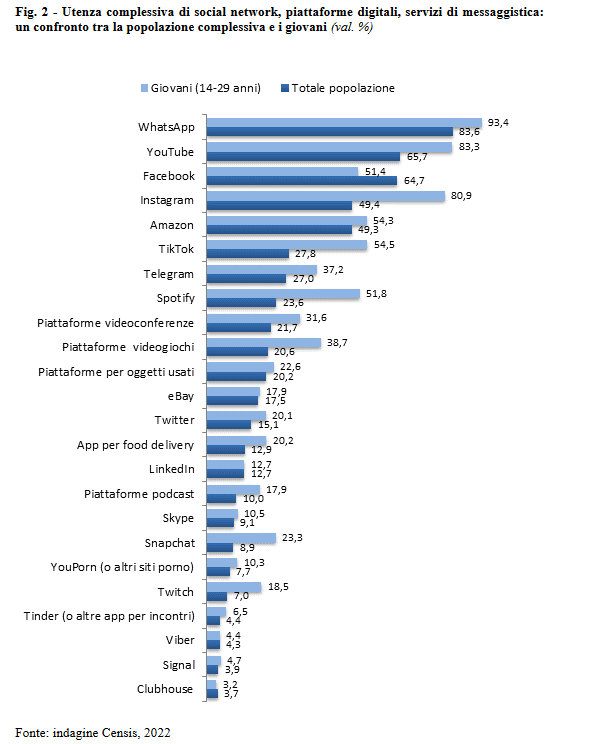Social signals: what are they today and how useful are they to SEO?
For at least ten years we have been discussing social signals for the SEO, and to be precise we try to understand whether the so-called social signals (generally understood as number of followers and interactions on various platforms) have a direct correlation to the ranking of the site and whether, therefore, they are a factor that can influence a website’s visibility in search results. Despite the denials and clarifications of Google, this theory still keeps popping up, and actually might have some truth to it: to put it more simply, the authority gained on social might actually give a positive boost to the site on Google, as long as one does not consider SEO social signals as a direct ranking factor, but as one of the many “external” elements that help strengthen the online brand.
What social signals are
Social signals are an integrative metric on the interaction of people with the content published on social networks and platforms such as Facebook, Twitter, Linkedin, Reddit, Medium and so on; these signals include all actions that define user engagement, such as reviews, comments, likes, dislikes, shares, ratings, pins, views, links and so on, and are used to understand the level of popularity and affinity for a specific content.
Social signals are thus all those activities that occur on social media and can be associated with a website or brand, tangible indicators of user interaction with content that are manifested within social platforms in the form of direct actions that users take in response to what they find interesting or relevant.
More precisely, therefore, these social signals are the metric used to detect human interaction and engagement of posts on social media, and among the most famous are:
- Likes, comments and shares on Facebook.
- Likes, retweets, quotes and Twitter conversations.
- Pinterest pins, views and comments.
- Linkedin connections, links and references.
- Followers, comments and regrams on Instagram.
- Views, thumbs up (or down) and comments on Youtube.
The higher the number of likes, shares, views and clicks a post has on social media, the more visible it is and the higher it is placed in the feed of the specific social media.
Social signals and Google, a controversial topic
Over time, social signals and engagement have become a key metric of social media marketing, because they reveal what are the types of content that most affect the target and which communication modes are most taken.
In addition, increasing likes, shares and views also means making posts more visible, and thus increasing the chances of increasing the audience of people reading, appreciating, sharing and clicking on posts: simplifying, some social media posts can lead to millions of shares, likes, views and clicks, often even to the site.
For this reason, as early as 2010 it began to speculate on a possible direct link between social signals and SEO, getting to insert these signals among the Google 200 ranking factors; in reality, sources of the same search engine have denied this correlation, but that did not break the myth.
To rekindle the proponents of this theory are also the words of Matt Cutts, who in 2010 had defined the “social pages as signals of ranking”, which play a role in organic SEO – from the perspective of reasoning that “the more followers you have and the more traffic you divert to your site from social media… the better your search ranking”. However, those claims date back to the dawn of modern SEO (for example, the Panda Update only arrives in 2011, not to mention the following interventions), and the same Cutts corrected them in 2014, saying that Google does not use social media profile data as ranking signals (this article reconstructs the whole story with the original sources).
Both John Mueller and Gary Illyes later confirmed that social signals do not have a direct impact on Google’s ranking and that, specifically, they are not taken into account by RankBrain, and the reason lies in the lack of reliability of social signal as a metric: followers can be purchased, I like and comments can be distorted and are just metrics of vanity and so on.
SEO social signals and ranking
We can therefore say with confidence that the social signals of a site and a brand do not influence directly and causally its ranking on Google, but there is something more to say – which is why it is important to work well on social.
We can not in fact overlook that there is still a latent and indirect correlation with the rankings, because social signals reinforce in some ways the SEO of the brand and the site for a number of reasons.
For example, are factors of ranking among other things backlinks, the ability to intercept the search intent, the quality of content, freshness (for some queries) and authoritativeness: through posts on social networks, the engagement generated and visibility obtained (summarised by the expression seo social signals) we can report to Google that we are publishing and sharing content that meets the search intent, are relevant and authoritative, high quality and fresh, and maybe we also conquer backlinks to content thanks to social word of mouth, because content appreciated, interesting and cared for become more easily sharable.
Then there is another aspect not to be overlooked: if Google officially does not use social signals for its ranking, it seems that other alternative search engines such as Bing take into account these parameters for their rankings, and I like, the shares, Views and social clicks can influence search rankings of such search engines.
In general, the goal of search engines is to classify and promote content that interests and involves readers: the behavioral metrics of users, which include social signals, can be a way to determine the relevance of a page to a query search, in light of the equation that the more a content is viewed, shared, appreciated, commented, the higher its quality, value and relevance.
What social signals are for
This is the thesis carried out (even today) by those who support the SEO value of social signals, but this causality is as said refuted by the words of Googler and also by specific studies.
In a broader sense, it is difficult (not to say impossible) to certify whether, how much and how social media can impact the positioning of a site and affect brand visibility in search engines, but we can still try to list some of the possible positive effects of good work on social media.
- Improve the traffic and performance of website content
The first way to exploit social media is to use it as a sounding board to share every content produced by our company, brand and site – which otherwise risk being available only to (limited) users of the site.
Quite simply, social media allows us to have access to a much wider audience than we would only have on the site, thus leading to an increase in traffic (both from an organic search through the networks themselves); in turn, this can lead to the improvement of other quality signals of these contents, such as engagement, visibility and duration, which could also have an indirect impact on the ranking.
- More opportunities to get natural backlinks
Social sharing not only brings more traffic to our content, but also increases the chances that they get backlinks: often just one share to increase exponentially the visibility of a post and, Having more readers, there are more opportunities to receive natural links to content that have won the public’s interest.
- Brand placement
Social profiles can play an important role in monopolizing branded keywords, positioning themselves together with the classic pages of the site.
Compared to the latter, social pages can offer users a different view of our activity, providing additional information for those who wish to, to the point of being able to represent a possible push towards the final conversion (or, on the contrary, discouraging action).
- Building trust
The SEO is (also) useful to create trust in the target audience: consumers today have a huge number of options available, and therefore it is some “details” that make the difference and lead to the final choice.
In this sense, social media profiles can serve to corroborate opinions about a brand and to increase the sense of trust towards that brand, while poor or non-existent social media can be a wake-up call for users. In addition, social networks offer the possibility to humanize the brand, going beyond the simple presentation of products/ services and characterizing itself in a more distinguishable way compared to competitors.
- Strengthening brand awareness
Social media is perhaps the place where today is branding, and a good presence on various platforms can help efforts in brand awareness, which we know have a positive indirect effect on SEO: synthesizing at the extreme, social profiles can help attract potential customers who, in turn, know the brand and get in touch with it, until possible conversion.
In this sense, we also need a work of monitoring the web reputation, recalling that the vast majority of people get information from online reviews and that a growing proportion of users base their purchase decisions on Facebook posts or YouTube reviews.
- Increasing local searches
Even local SEO can benefit from a positive presence on social networks, because often Serps linked to commercial queries have lists of activities from platforms such as Facebook, Yelp and of course Google My Business (in addition to Tripadvisor for the food sector, for example, extending the concept).
As mentioned before, feedbacks and reviews are also crucial for local SEO marketing, so much so that according to some statistics they represent 13% of the ranking factors for local searches and 7% for general searches.
Social signals, a different perspective on their meaning
In addition to the classic definition of social signals, there is another way of interpreting this expression and linking it to the way Google’s algorithms include the relationships between entities, which is what our Ivano Di Biasi wrote in his book on link building.
In this sense, social signals are not those derived from social networks, but are information from web pages that Google uses to organize data and reports of its “social graph“, the graph that studies and analyzes entities and how they are related to each other based on popularity with people. In its ongoing effort to better understand content and its relevance to users, Google is using these entities and their relationships to build a deeper understanding of the web: social signals, in this new sense, include the frequency with which an entity is mentioned in social contexts, the reputation and authority of the sources making these mentions, and the consistency and contextualization of these mentions within broader discussions.
Among the elements evaluated by the algorithm there are evaluations such as “how many people talk about the brand”, “how many link to your brand”, “who is associated with your brand” and “how famous is who cites the brand”, and every action in the social graph is a social signal.
This information is vital to make Google understand who the brand is, what it is worth, in what context it exists, what people think online, who is recognized as authoritative, and in concrete can be mentions and quotes to the brand or the URL of the site – that can also be used to calculate the Share of Voice, as we know.
Knowing social signals is important in the off-page optimization strategy and in the construction of a natural backlink profile: if nobody knows our brand and nobody talks about it online, It is difficult to justify tons of backlinks resulting only from aggressive link building campaigns, and Google can take little to verify the inconsistency of this authoritativeness, exposing the site to the risk of a penalty.
Statistics about social networks in Italy
In conclusion, social media has become an integral part of online life and has completely changed the way we communicate and make decisions, and therefore it is inevitable to think that there may be SEO social signals. Officially, this is not the case for Google and these signals have no weight for ranking directly, but in some way they can indirectly influence algorithm considerations about the quality and interest of published content.
The numbers better describe the potential of this basin: according to Audiweb, we Italians spend online from mobile 2 hours and 36 minutes on the average day, with peaks of 3 hours for 18-34 year olds.

Again, the 18th Censis Communication Report certifies that 82.2 percent of users visit and use their own social networks, distributing themselves among the many platforms as shown below.
And while the figures for the 14-29 age group are relatively surprising (92.4% use WhatsApp, 83.3% YouTube, 80.9% Instagram, 64.7% Facebook, 54.3% Amazon, 31.6% video conferencing platforms, 51, 8 percent Spotify, 54.5 percent TikTok, 37.1 percent Telegram, 20.1 percent (former) Twitter), even among older people (65 years and older) social networks are making inroads, as users from 42.0 percent to 51.4 percent) and users increase from 36.5 percent to 47.7 percent in a single year.
Social networks are imposing themselves not only as a means of maintaining “virtual” contact, but also and increasingly as a source of information, as shown by this other Censis report, which analyzes more broadly the issue of misinformation and fake news, certifying that more than half of the active online population, amounting to 28.6 million people, use precisely social platforms in a habitual way to find and read current news.

Italians and social media
Even more detailed are Vincos‘ data, based on the 2022 social media tally in Italy: last year, Italians showed a predilection for YouTube, which dominated the social media scene with an average monthly affluence of 36.4 million users, marking a 3 percent increase and narrowly surpassing Facebook, which instead attracted some 35.6 million people per month, up 2 percent. Instagram rounded out the top trio, registering 3..1 million users, up 6 percent.

This is where the big news and developments begin: LinkedIn took the fourth position, held in 2021 by Pinterest, and amassed a following of 18 million people. TikTok, with an impressive 68 percent jump, reached 16.2 million users, and looking at data for the first few months of 2023, the Chinese-born app continued to expand its user base, approaching 21 million as of May, according to the latest social media statistics.
Telegram ranked fifth with 16 million users, despite a 6 percent decrease, and X (Twitter, acquired by Elon Musk in late 2022), saw 31 percent growth to just over 15 million users, with May numbers indicating a further increase to 18 million.
Pinterest follows with 14.8 million users, but declined 28.5 percent. Niche platforms close out the ranking: Twitch, despite a 47.5 percent decrease, counts on 5 million users; Reddit grows 28 percent to 3.8 million; Tumblr increases 33 percent with 2.4 million; and Snapchat rises 17 percent with 2.2 million users.
Despite not being the social network with the highest number of visits, Facebook still held the lead for time spent by Italians on the platform, with a monthly average of 13 hours per user in 2022, up from 11 hours and 29 minutes in 2021. Instagram ranked second with 6 hours and 39 minutes of average usage, followed by YouTube with 5 hours and 13 minutes. TikTok recorded an average usage time of 4 hours and 49 minutes, marking one hour more than the previous year.



